Oritori Ishigaki City Official Tourism Information Site
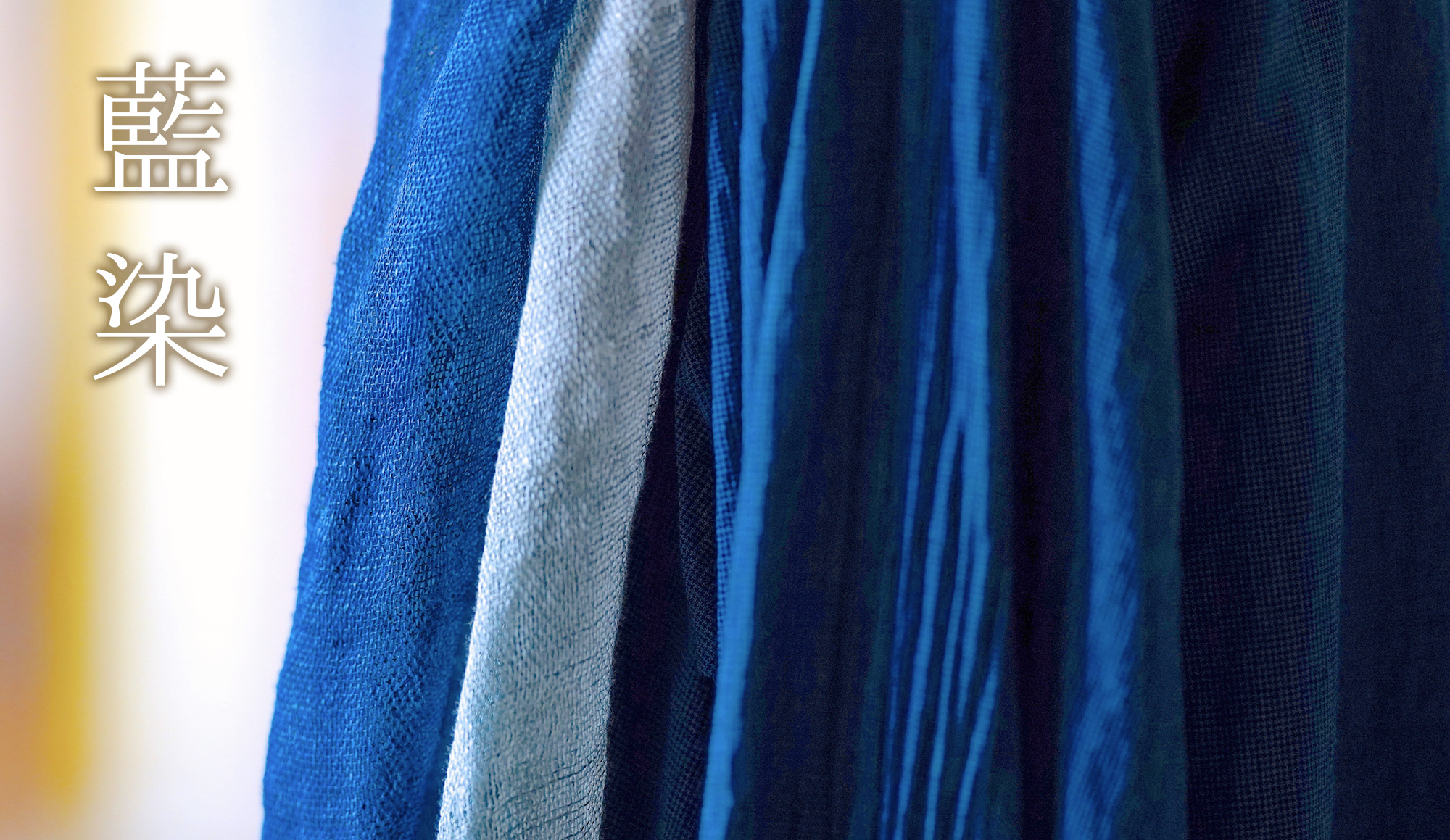
Two types of indigo plants, which belong to the legume family, are cultivated on the Yaeyama Islands, and indigo is made from these plants, which has been passed down through the generations as a dye, mainly for dyeing textile threads. Today, the indigo produced in this area is called "Yaeyama Indigo," and its color, reminiscent of the night sea and sky of the southern islands, exudes a quiet and mysterious beauty.
The indigo dyeing workshop, Shimaai Farm, grows and harvests the indigo plant Nanbankomatsunagi, a legume, in the natural environment of Ishigaki Island, processes the raw materials, and produces precipitated indigo. The accumulated precipitated indigo is used for dyeing all year round.
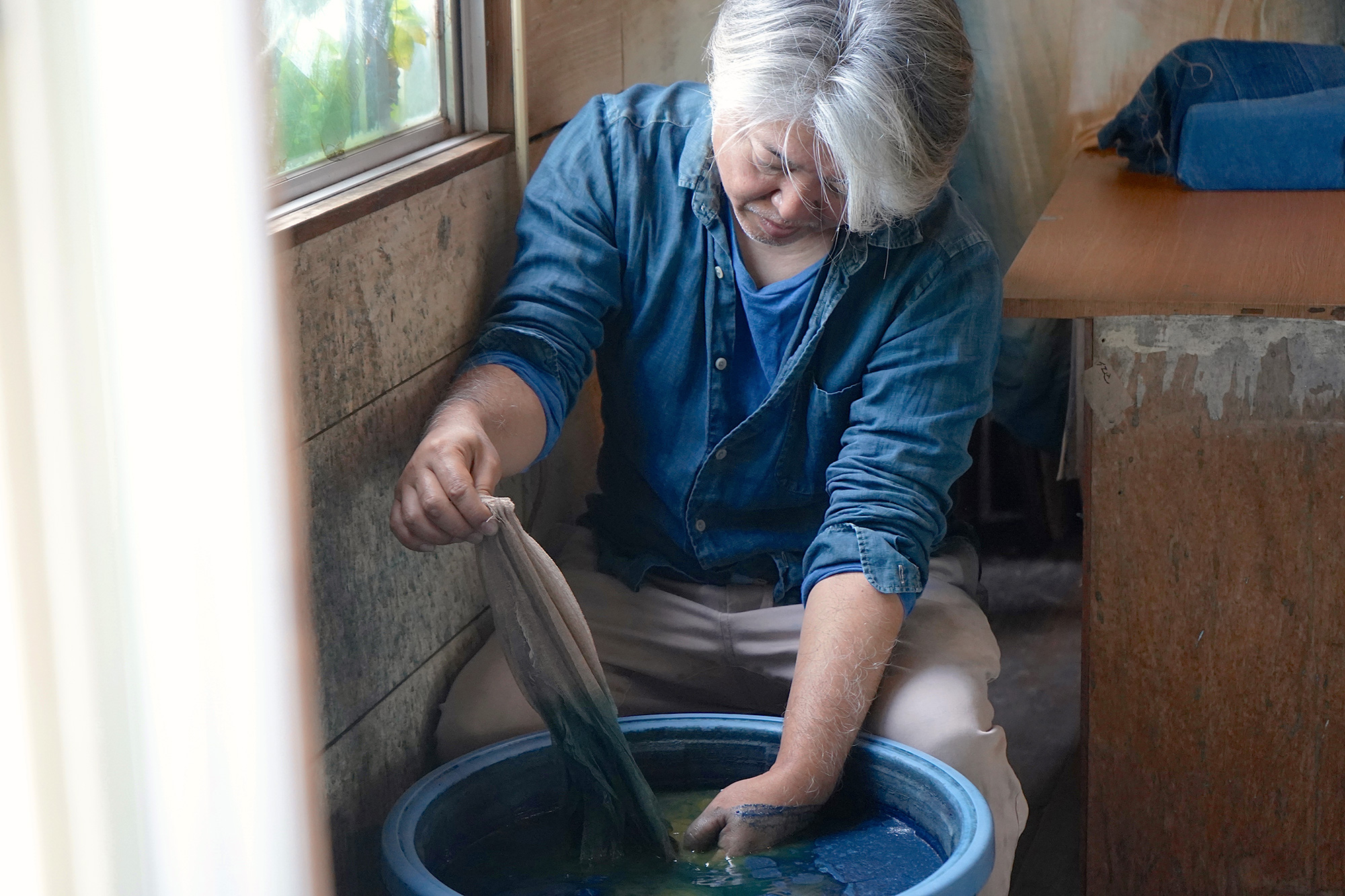
Tsuyoshi Ohama, the representative of Shimaai Farm, grew up watching his grandmother and mother make Minsa weaving from a young age. After graduating from elementary school, he left Ishigaki Island and went to middle and high school in Nagasaki and Tokyo. He then studied dyeing and weaving at a junior college in Kyoto, before returning to Ishigaki Island at the age of 26.
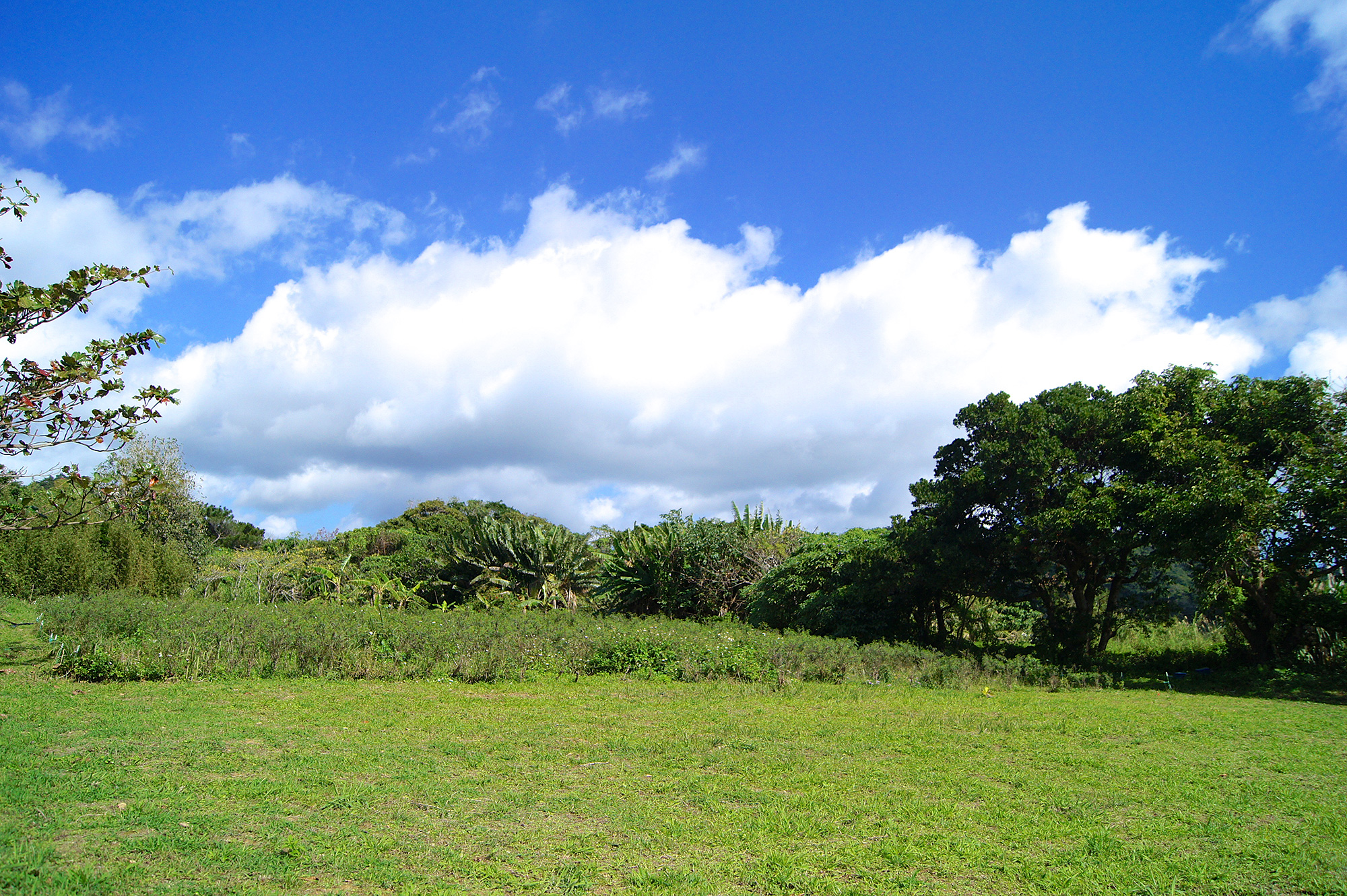
Aibatake
While searching for "manufacturing that can only be done here," Ohama came into contact with the island's various natural fibers and natural dyes. He decided to revitalize the island's indigo dyeing, which had almost disappeared, and in 2002 he acquired a field and opened Shimaai Farm, a small but complete indigo dyeing workshop that handles everything from cultivation to dyeing.
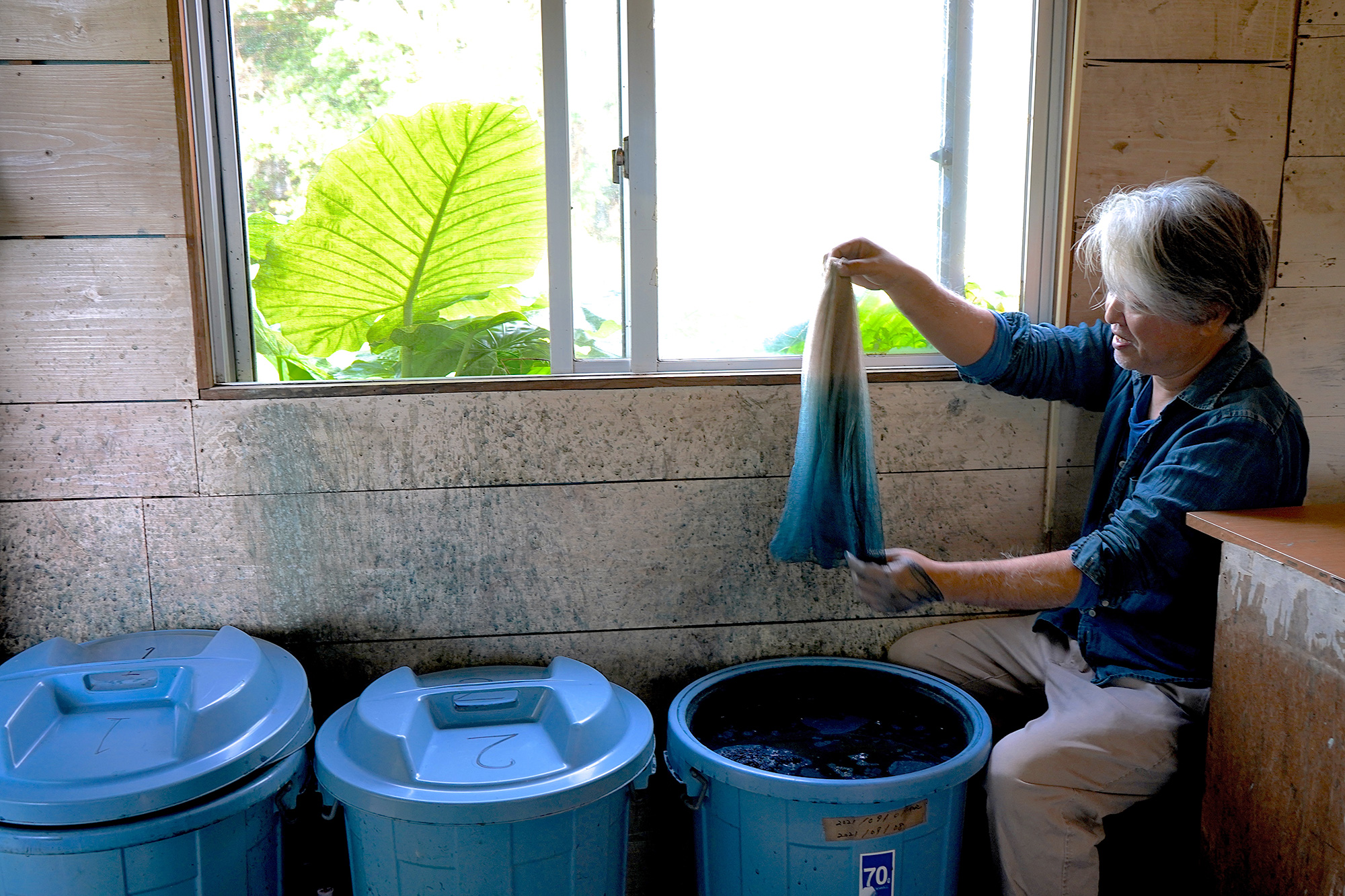
"Everything went smoothly from when I first encountered the farm to when it opened. It was as if I was being guided by something, pushed to do what I needed to do. Looking back on it now, it's very strange," says Ohama with a smile, his hands dyed indigo blue.
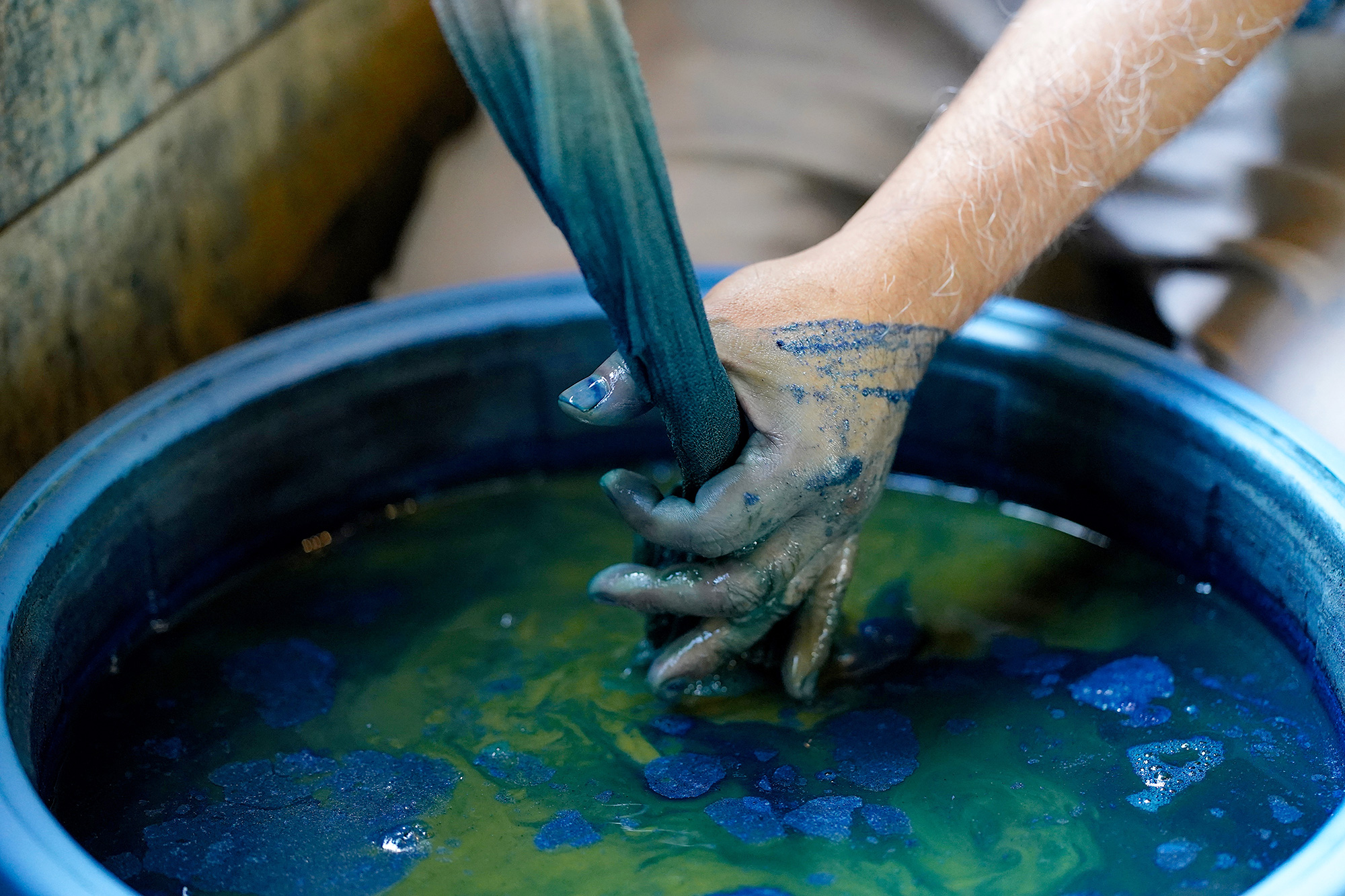
Work at Shima Indigo Farm begins with growing indigo plants in the island's blessed natural environment without the use of chemical fertilizers or pesticides.
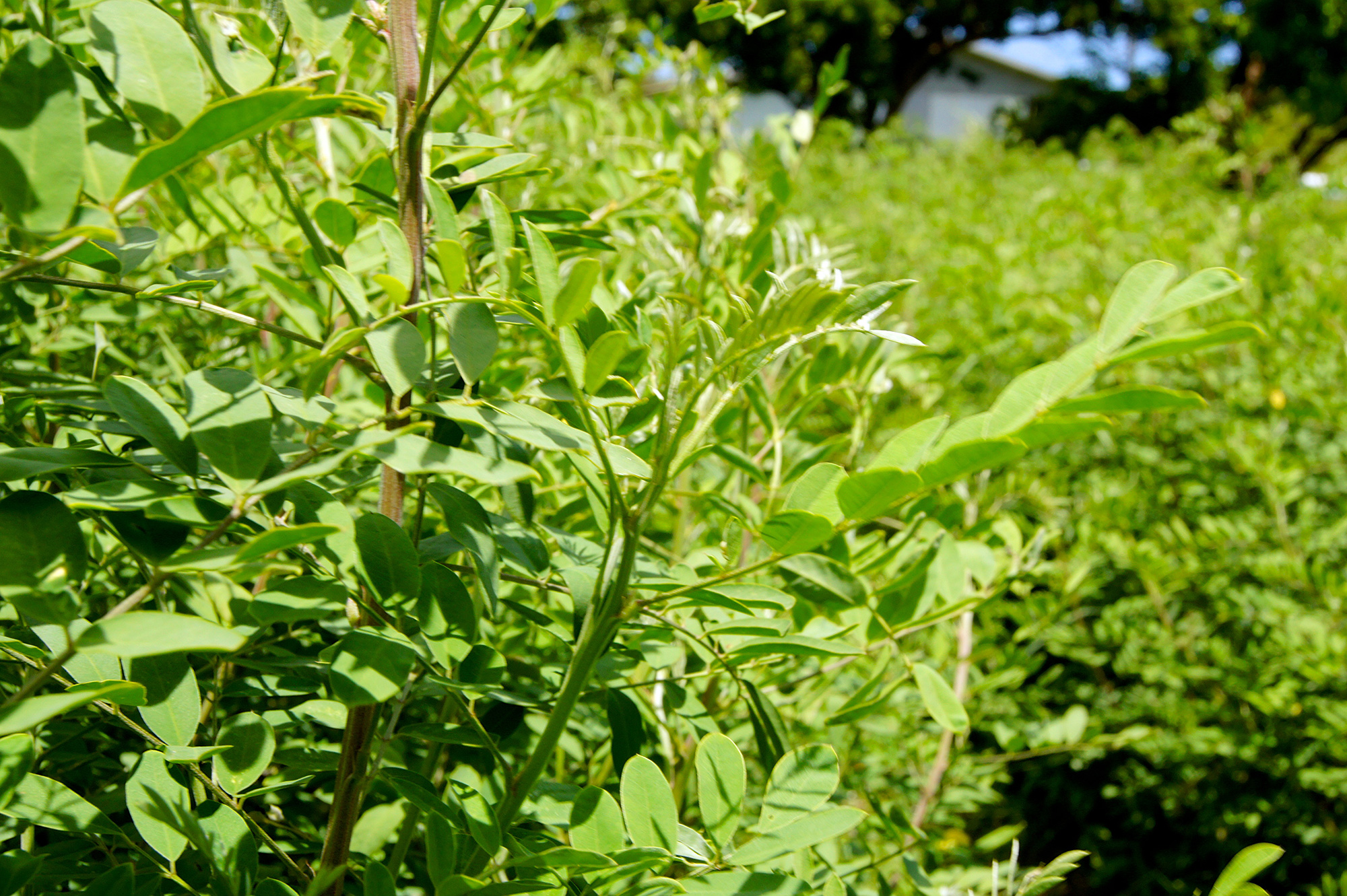
Nanbankomatsunagi leaves
Nanbankomatsunagi is harvested mainly in the summer from May to October to make precipitated indigo. This period is also when many typhoons hit the subtropical Yaeyama Islands, and in some years the harvest is reduced as a result. It is a daily process of dyeing and creating, experiencing the ups and downs of nature.
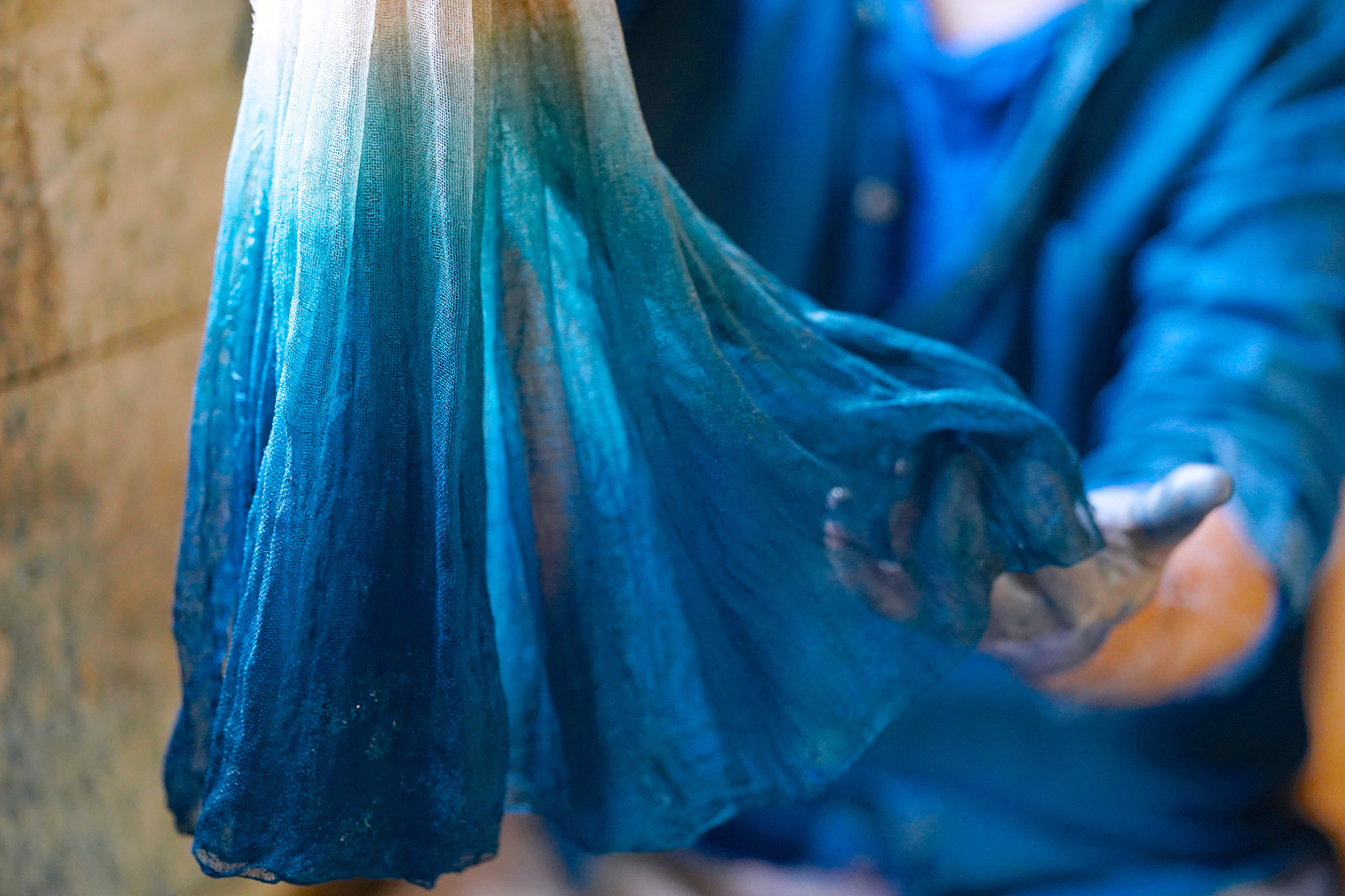
"Living with the colors of nature may require a little bit of effort, but it will surely improve your quality of life. We want to help you maintain a healthy mind and body through the colors of nature."
The harvested branches and leaves are soaked in water. After soaking for a certain period of time, the indigo pigment dissolves in the liquid, and lime is added and stirred. After leaving it to stand for a while, an indigo-colored precipitate forms at the bottom. When the supernatant liquid is removed, an indigo-colored paste called precipitated indigo is produced.
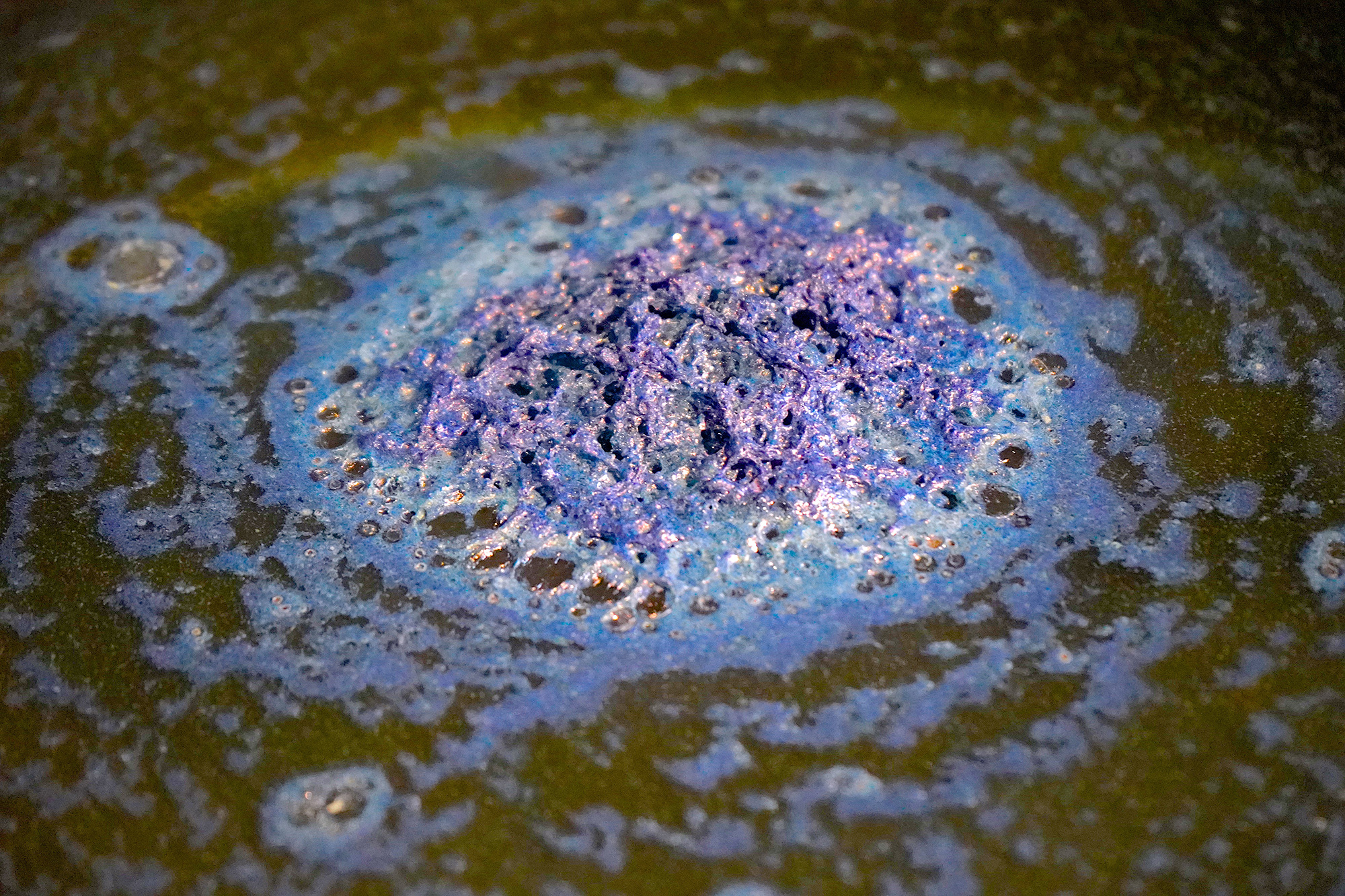
These bubbles are called "indigo flowers" and act as a barometer for determining the health of the dye.
Using shell ash and wood ash as an alkaline agent, the indigo is made through natural fermentation, and the dyeing process is carried out while monitoring the condition of the indigo daily. Shimaai Farm aims to preserve and coexist with the natural environment, and is committed to using methods that do not use chemicals in order to continue working sustainably.
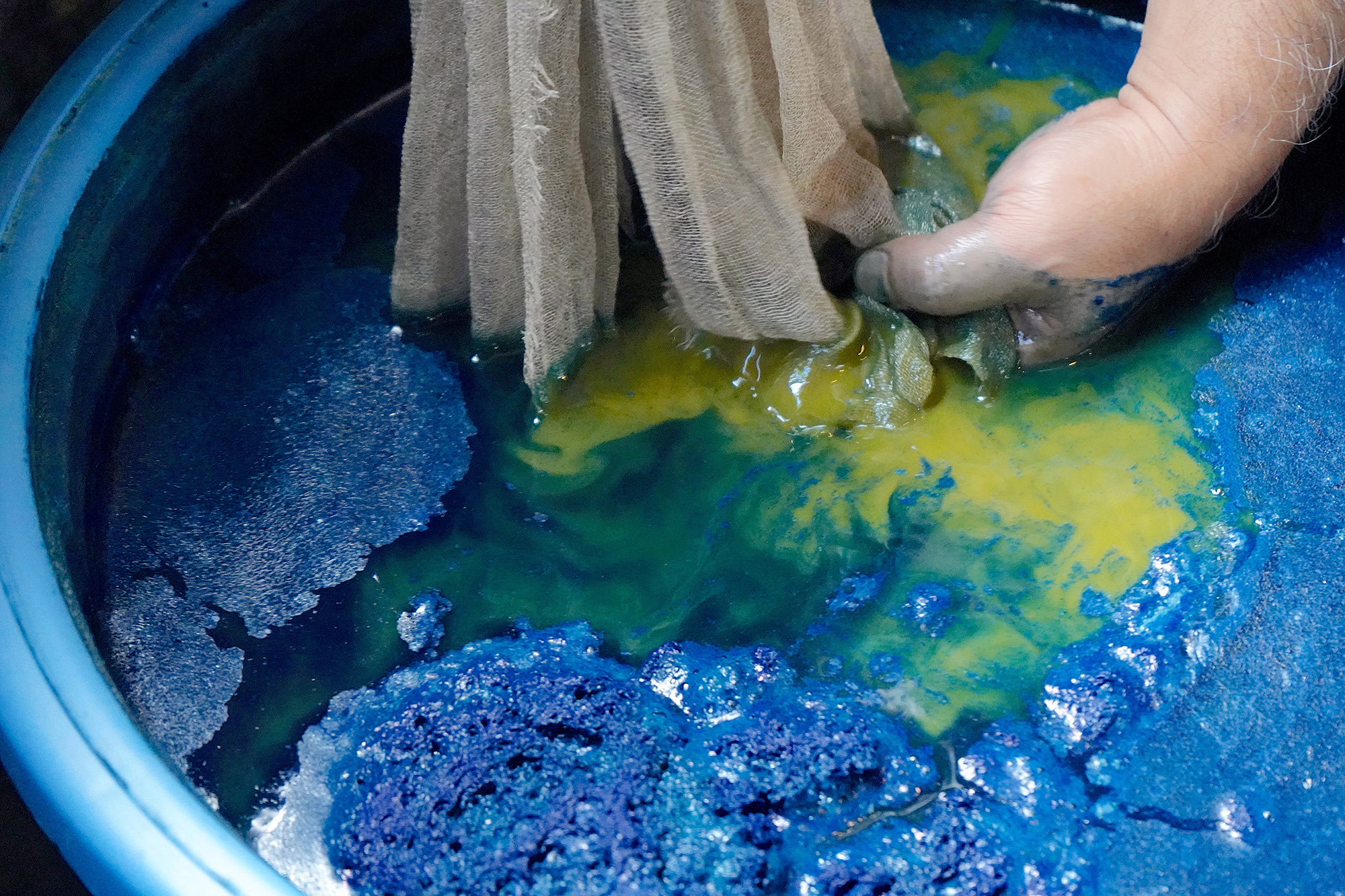
At some point, Yaeyama indigo came to be called "Indian indigo" ("Indian indigo" is the name of the indigo dye imported from India), and before we knew it, it had become confused with the name of a plant and began to be introduced in plant encyclopedias and other publications.
"If we don't correct this mistake, people will mistakenly think that we are using imported dyes, which will lower the value of the indigo dyeing that has been passed down on this island for generations," they feared. After much discussion with local dye workers, they decided on the name "Yaeyama Indigo" to further promote the region in the future.
Shimaai Farm offers a service called "Konya Service" (UPCYCLE from White to Navy), where they dye used clothing with Yaeyama indigo and give it new life. This modern service allows people to easily incorporate indigo dyeing into their daily lives and upcycles used clothing, leading to a more sustainable lifestyle.
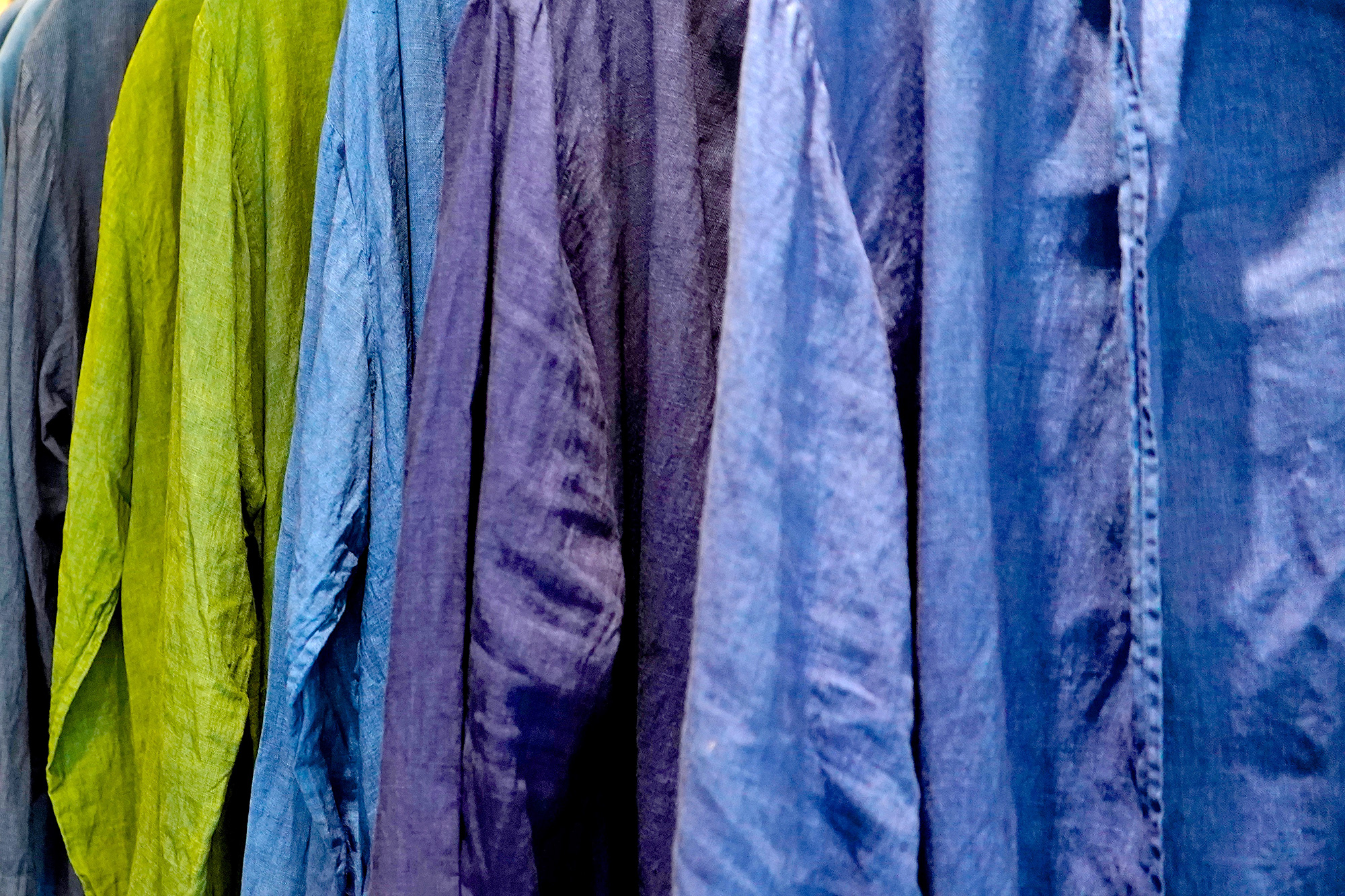
In addition to clothing and scarves, Shimaai Farm also offers a wide range of indigo-dyed items that blend naturally into your everyday life, including bags, wallets, and key chains.
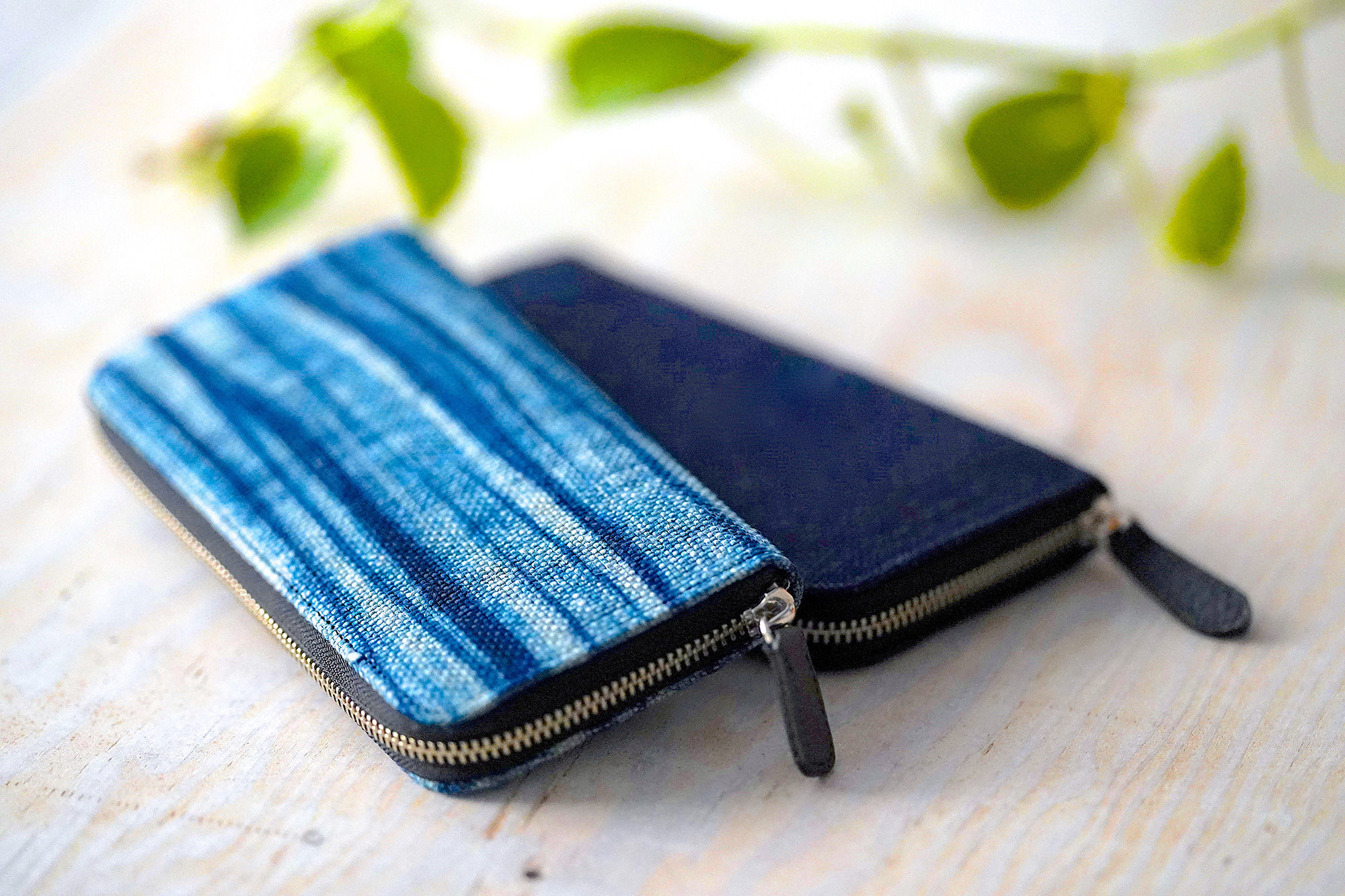
Indigo dyed wallet
"With the goal of continuing to do this job for the rest of my life in mind, I believe that indigo dyeing (indigo color) is necessary for people to be human, and my goal for the future is to prove this. I believe there is a reason why indigo dyeing has continued to exist since 3000 BC, and I believe that it contains something that people need."
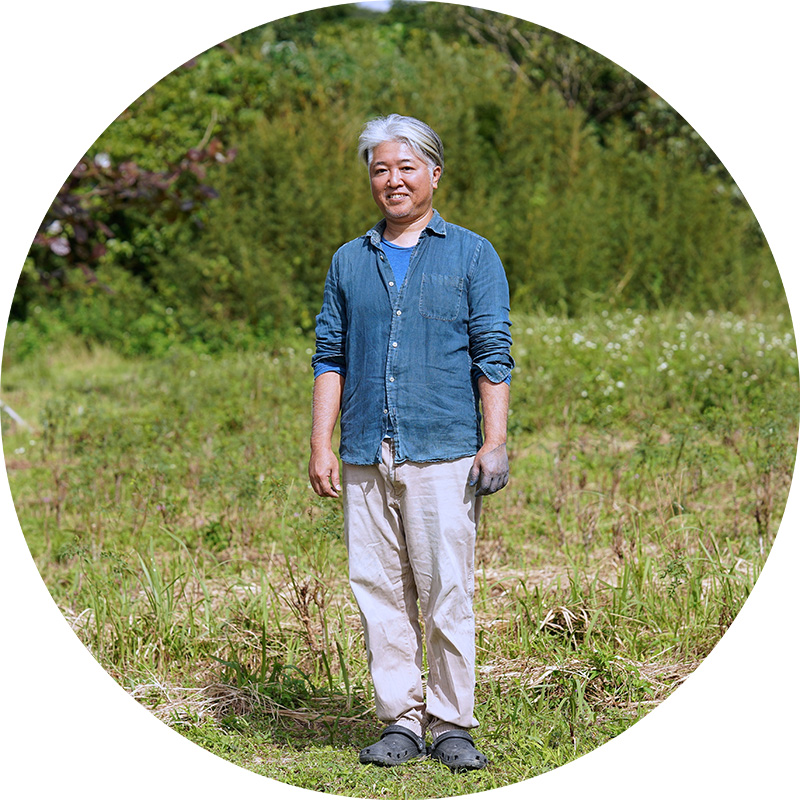
profile
Tsuyoshi Ohama
Born in Ishigaki City in 1972
From an early age, she grew up surrounded by Minsa weaving, which her grandmother and mother were involved in.
After graduating from elementary school, she left the island and spent her junior and senior high school years in Nagasaki and Tokyo, and after studying dyeing and weaving at a junior college in Kyoto, she returned to the island at the age of 26. In 2002, she acquired a field and opened Shimaai Farm, a small indigo dyeing workshop that handles everything from cultivation to dyeing.
Throughout his life, he will continue to prove that "indigo dyeing (indigo color) is necessary for people to be human."
» HP